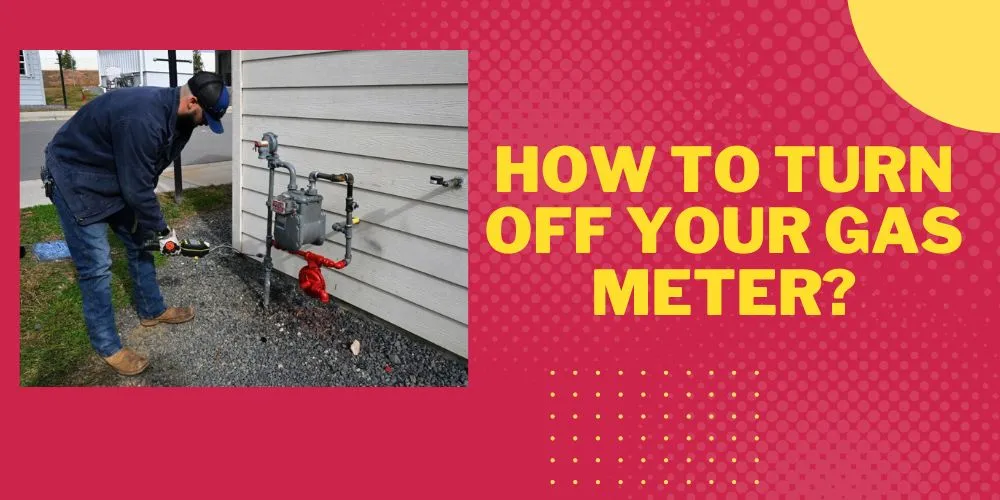Rainwater harvesting is an age-old practice that various civilizations have used throughout history to capture and store water for later use.
But what if you don’t have a roof to collect rainwater?
Fear not, as plenty of innovative and sustainable methods exist to gather this precious resource. But, to implement those, first you must learn how to collect rainwater without a roof.
Don’t worry, in this article, we will explore alternative ways to collect rainwater without relying on a traditional roof setup, making it possible for everyone to benefit from this eco-friendly and cost-effective solution.
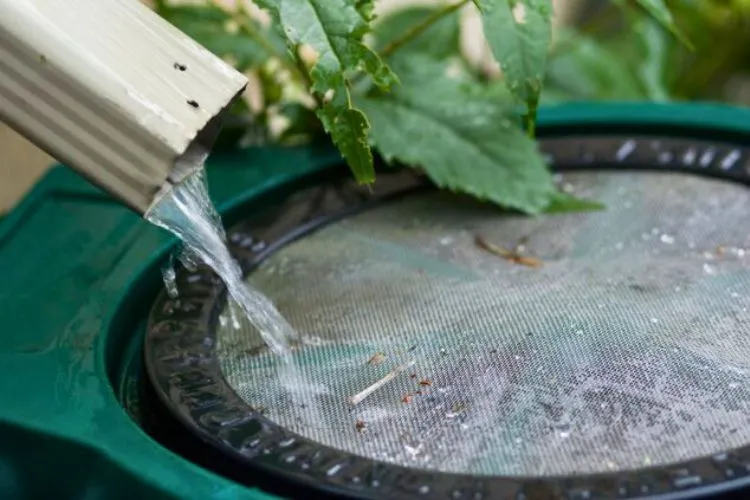
From using unconventional catchment surfaces to implementing creative storage solutions, we’ll guide you through harnessing rainwater for your everyday needs.
So let’s dive in and discover the world of rainwater collection without a roof!
How to collect rainwater without a roof/gutters?
Not everyone has access to a roof or a traditional catchment system. This article will explore some creative and effective ways to collect rainwater without a roof, ensuring that everyone can benefit from this eco-friendly and cost-effective solution.
Let’s dive into these alternative methods of rainwater collection!
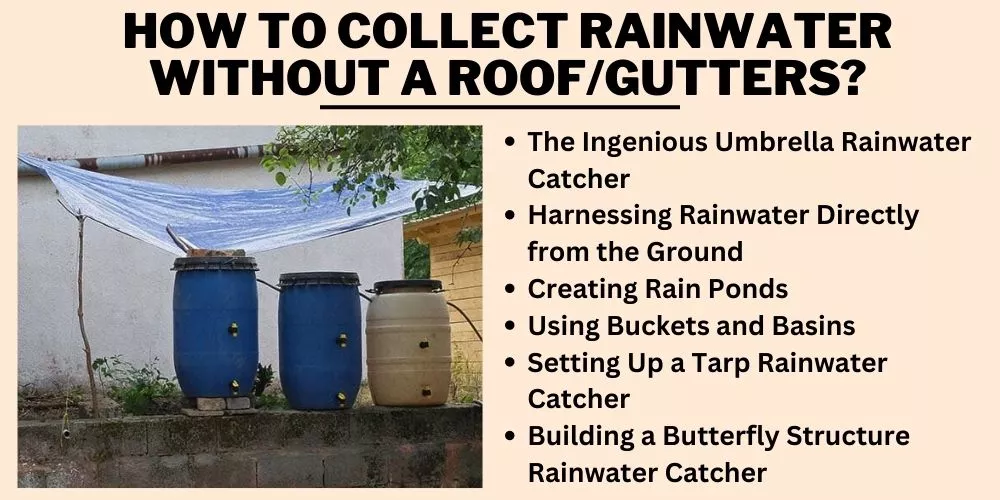
The Ingenious Umbrella Rainwater Catcher
One creative method of collecting rainwater without a roof is using an umbrella rainwater catcher. This innovative device functions similarly to an ordinary umbrella but is designed to capture and store rainwater effectively.
By placing the umbrella rainwater catcher in an open area during rainfall, you can collect a significant amount of water that can be used for various purposes, such as watering plants or flushing toilets.
This portable, easy-to-use solution is perfect for those lacking a conventional catchment system.
Harnessing Rainwater Directly from the Ground
Another unconventional method of collecting rainwater is capturing it directly from the ground. This can be achieved by creating a rain garden or installing a ground-level catchment system.
Rain gardens are designed to collect and store rainwater using plants and landscaping techniques that encourage water infiltration and retention.
On the other hand, a ground-level catchment system can be created by digging a shallow depression in the ground and lining it with waterproof material.
This system allows rainwater to pool and be easily collected for later use. Both of these methods are excellent options for those who do not have access to a roof for rainwater collection.
Creating Rain Ponds
Rain ponds are a natural and effective method for collecting rainwater. By digging a shallow depression in the ground, you can create a pond that will fill with rainwater during storms.
This water can then be used for irrigation, watering plants, or even as a habitat for local wildlife. To enhance the effectiveness of your rain pond, consider planting water-loving plants around the edges to help filter the water and prevent erosion.
Using Buckets and Basins
A simple yet effective way to collect rainwater is by using buckets, basins, or other large containers. Place these containers in open areas where they can easily catch rainwater.
Be sure to use clean containers to avoid contaminating the collected water. Once the rain has stopped, you can use the collected water for various purposes, such as watering plants or flushing toilets.
Setting Up a Tarp Rainwater Catcher
A tarp rainwater catcher is an easy and affordable method for collecting rainwater without a roof. To create a tarp rainwater catcher, you will need a large tarp, rope, and a few poles or trees to support the tarp.
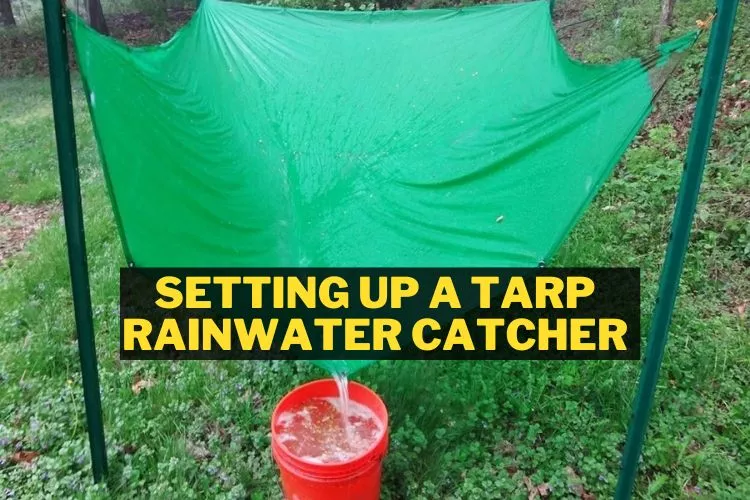
Simply tie the tarp’s corners to the poles or trees, creating a slight slope for the water to run off. Place a bucket, basin, or barrel under the lowest point of the tarp to collect the rainwater. This method can yield significant water, especially during heavy rainfall.
Building a Butterfly Structure Rainwater Catcher
A butterfly structure rainwater catcher is a more sophisticated method for collecting rainwater without a roof. This catcher type consists of two sloping surfaces resembling butterfly wings, which direct rainwater to a central collection point.
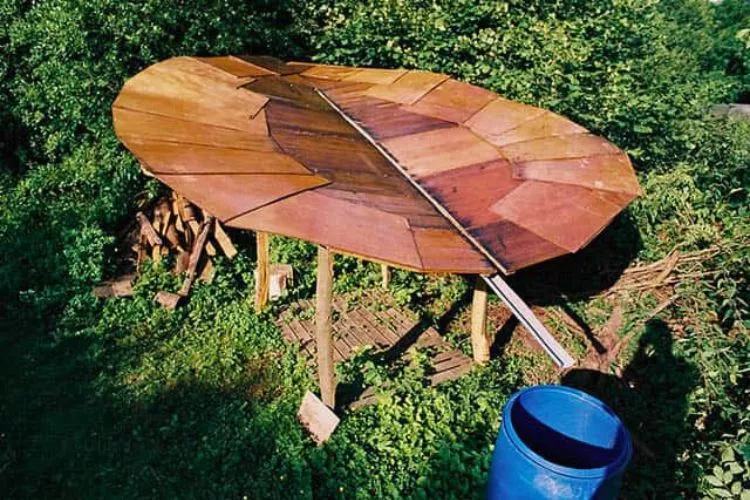
To build a butterfly structure rainwater catcher, you will need plywood or metal sheets, a frame to support the structure, and a gutter or pipe to direct the water to a storage container.
Once constructed, this rainwater catcher can provide a reliable water source for various uses.
Other Uncommon Methods
There are other uncommon ways to collect rainwater without a roof apart from the above mentioned methods. Some of these include:
- Swale: A swale is a shallow trench dug along the contour of the land to capture and direct rainwater runoff. This method helps slow the flow of water, allowing it to infiltrate the soil and recharge groundwater.
- Terracotta pots: Water-harvesting terracotta pots can be placed in the ground to collect rainwater. These pots have small holes that allow water to seep in, and the collected water can then be extracted using a simple pump.
- Rain chain: A rain chain is a decorative alternative to a downspout, which can direct rainwater from a gutter into a storage container or rain garden.
- Rain garden: A rain garden is a landscaped area designed to collect and absorb rainwater runoff, usually from roofs, driveways, or other impervious surfaces. Rain gardens help reduce stormwater runoff entering local waterways while providing a habitat for native plants and wildlife.
- French drain and dry well: A French drain is a trench filled with gravel or rock that redirects surface water away from an area, while a dry well is an underground structure that collects and temporarily stores rainwater before infiltrating the soil.
frequently asked questions (FAQs)
Do rain barrels work without gutters?
Yes, rain barrels can work without gutters. While gutters are commonly used to direct rainwater into rain barrels, there are alternative methods for collecting rainwater. You can place the rain barrel directly under the roof’s edge or use a tarp, umbrella, or butterfly structure rainwater catcher to direct rainwater into the barrel. These methods may not be as efficient as gutters, but they can still help you collect significant rainwater for various purposes.
Can you drink rainwater for survival?
In a survival situation, you can drink rainwater as long as it is collected and stored properly. Rainwater is generally clean and contaminant-free when it falls from the sky. However, it can become contaminated by pollutants in the air or from surfaces it comes into contact with, such as roofs or gutters. To ensure the safety of rainwater for drinking, collect it in a clean container, filter it to remove debris, and purify it using methods like boiling chemical treatment or UV light.
Does boiling rainwater make it safe to drink?
Boiling rainwater can make it safe to drink by killing most bacteria, viruses, and parasites that may be present in the water. However, boiling does not remove chemicals, heavy metals, or other pollutants that might have contaminated the rainwater. To ensure the highest level of safety, it is recommended to filter the rainwater first to remove debris and then use additional purification methods, such as activated carbon filters or chemical treatment, to remove any remaining contaminants before boiling and consuming the water.
Conclusion:
Collecting rainwater without a roof is possible and environmentally friendly and resourceful practice.
By utilizing various methods such as rain ponds, buckets and basins, tarp rainwater catchers, butterfly structure rainwater catchers, and other innovative techniques, individuals can effectively harvest rainwater for many purposes.
These methods help conserve water resources and reduce reliance on municipal water supplies, ultimately promoting self-sufficiency and sustainability.
As water scarcity becomes a growing concern worldwide, exploring alternative methods for collecting rainwater will become increasingly important, and these roofless techniques offer viable solutions for individuals and communities alike.

